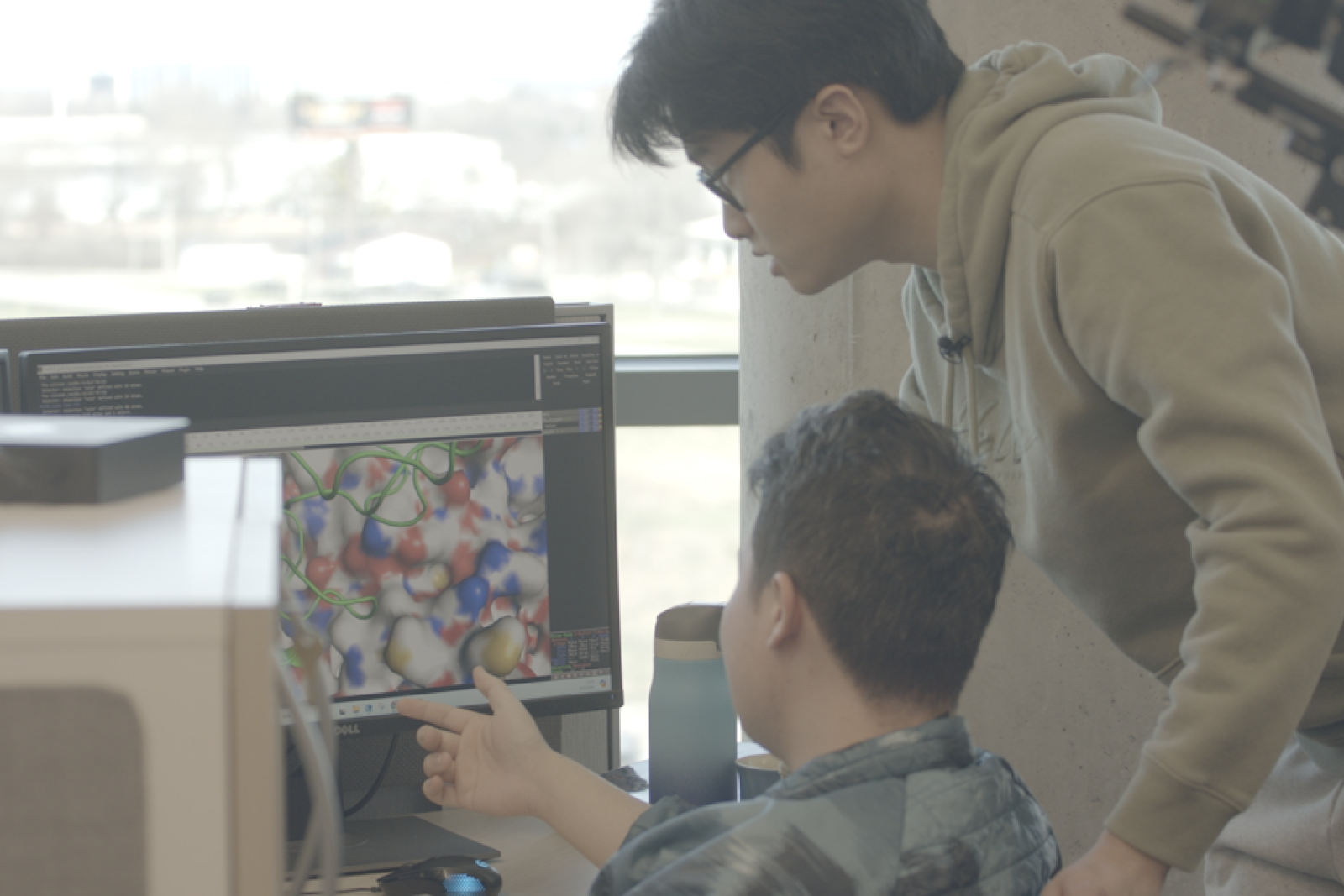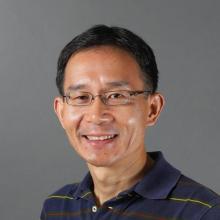Super computers: How the Cheng Lab is redefining drug development

On west campus, a clean, minimalist building stands in stark contrast to the neighboring fractured lots of the Carmack. After six years in Riffe Hall, Professor Xiaolin Cheng, PhD, of the Division of Medicinal Chemistry and Pharmacognosy, has relocated his lab to this shiny new research hub.
The Pelotonia Research Center was completed in May 2023 as an interprofessional home base for cancer research, from environmental sciences to gene-based therapies. Researchers in the Cheng Lab are organized in groups of desks on the office side of the fifth floor; the other side of the floor is filled with pristine wet lab benches. A smiling flowerpot complements the powerful PC of a PhD candidate and a few national flags are dotted throughout the rest of the office – simply, the pack of computational scientists has made the new center a cozy space.
It’s here that the Cheng Lab is revolutionizing computational drug discovery, utilizing computer tools and mathematical models to cut down the lengthy process of experimentation that has initiated the design process for years.
“Computational modeling and simulation play crucial roles in modern drug discovery by enhancing our ability to understand, predict and optimize drug interactions and efficacy,” Dr. Cheng said. “Specifically, we can investigate how a drug molecule interacts with a disease-related target to alter its behavior, leading to the desired therapeutic effects.”
Since beginning as a computational chemist in the 1990s, Dr. Cheng has seen an explosion in the capabilities of computational tools, as well as professional interest in computational chemists like himself. The rate of advancement for drug discovery is being blown wide open.
“Innovations have improved both the accuracy and efficiency of predicting drug efficacy, significantly accelerating the development of new therapeutics that can address complex medical challenges,” Dr. Cheng reflected. “People are realizing that computation has become an integral part of research.”
New development of computational drug design (CDD) tools has revolutionized the starting line of drug development – not eliminating the need for traditional experimentation but providing essential direction in the early stages. Comparing the time and financial cost of launching development through wet lab experimentation and computational design is day and night because of the ability of computers to identify therapeutic targets and molecules of interest.

“Computational modeling and simulation play crucial roles in modern drug discovery by enhancing our ability to
understand, predict and optimize drug interactions and efficacy.”
The Cheng Lab’s expertise in applying computational design to the drug development process means that the group has a lot to offer as a collaborator with other drug development labs in the College of Pharmacy and at The Ohio State University Wexner Medical Center (OSUWMC).
“I spent three years at the Shanghai Institute of Organic Chemistry after studying as a computational chemist and biophysicist in college,” Dr. Cheng said. “This experience marked my initial effort to integrate different scientific disciplines. Since moving to Ohio State, I have focused on building an interdisciplinary team and collaborating closely with groups possessing diverse and complementary expertise.”
Dr. Cheng’s lab includes researchers with backgrounds in biochemistry, physics, computer science and more. If one team member runs into a roadblock, chances are they have a colleague with different experience who is ready to help them tackle it.
“This varied background fosters a collaborative environment where different approaches and perspectives converge to advance our research,” Dr. Cheng said.
Right now, this diverse team of researchers is gearing up to tackle the incoming flurry of changes hurtling toward computational drug discovery. As Cheng Lab researchers test how artificial intelligence (AI) can be pieced into computational drug tools, Dr. Cheng is working with college leadership to define the role that AI will play in the world of drug discovery and the college’s labs.
“If we’re training the next generation of scientists for drug discovery, AI is going to be a very important part of their lives,” Dr. Cheng said. “It’s critical for us to harness the power of an incoming advancement like AI to prepare our students for their future because it will fundamentally change the landscape of drug discovery technologies.”
“People are realizing that computation has become an integral part of research.”
Though bottling the potential of AI is a daunting challenge, adopting this new technology is simply what computational researchers like Dr. Cheng have been doing for decades. As the world of drug discovery speeds
along, this is how we keep pace.